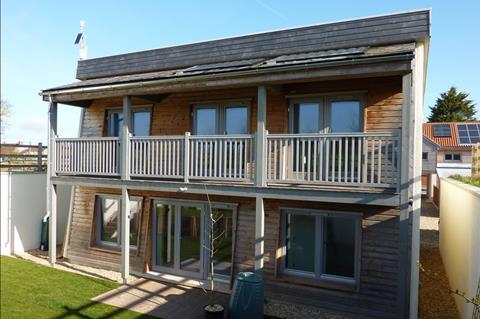Monitoring buildings’ energy performance is essential to achieve our low carbon goal – if we fail in reducing emissions it will have serious consequences
In his speech this week, Andrew Stunell highlighted a growing concern within the industry that many new homes are failing to meet their low-energy targets once built.
Referring to a recent study at Joseph Rowntree Foundation’s Elm Tree Mews development in York, which was undertaken by one of the GHA’s academic partners, Leeds Metropolitan University’s Centre for the Built Environment, Stunell reiterated the need for carbon reduction in the built environment to be achieved in practice. The reality, however, is that many new homes are likely to fall well short of meeting their carbon emission reduction targets. Research by Leeds Metropolitan University found that actual heat losses can be as much as double those predicted at the design stage. Results from 15 heat loss tests, carried out on a variety of new housing developments since 2005, have recorded losses of between 10% and 120% higher than designed with the average gap between designed and built performance 60%.
Professor Malcolm Bell, who led much of the research for the university, has expressed his fear that a failure to deliver real reductions in domestic carbon emissions will seriously undermine the government’s national reduction targets as well as generate commercial and financial risk for developers. That’s not to mention the issue of new homes failing to meet consumer expectations of lower fuel bills and increased comfort with the catastrophic end result potentially being a loss of confidence in new homes.
The Good Homes Alliance is working with our members to measure performance and to provide crucial feedback to the industry as part of an intensive monitoring and feedback programme. With the EST, the Department for Communities and Local Government and the NHBC Foundation and the Technology Strategy Board we hope to expand the evidence base for the energy performance of new homes and feedback to the industry.
Monitoring is essential if we are to learn from the strengths and weaknesses of current build systems and practices and achieve our lower carbon goal. We hope that as the issues surrounding the performance become more pronounced an increasing number of developers and industry groups will follow our lead, further helping to improve our understanding of the energy performance of new homes. This will lay clear the many benefits of ºÃÉ«ÏÈÉúTV Regulations addressing actual, as-built performance.
We therefore wholeheartedly welcome the creation of an advisory committee on compliance, as suggested by Stunell, to ensure standards are met in practice, helping to close the performance gap and ensuring the work of the government and housebuilders is not in vain.

Jon Bootland is director of the Good Homes Alliance



























No comments yet